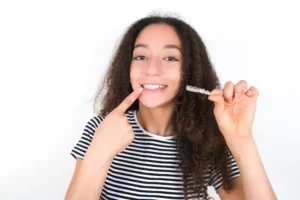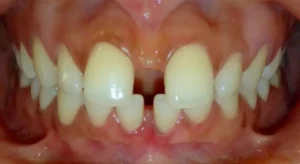How To Diagnose, Treatment Methods, and More
An open bite is a type of bad bite, or malocclusion, where the upper and lower teeth don’t touch when the mouth is closed. There exists a space between the upper and lower teeth, which can manifest either in the anterior or posterior regions of the oral cavity. However, an open bite in the front, known as an anterior open bite, is more common.
Normally, the upper and lower rows of teeth should connect. The upper teeth should slightly overlap the lower teeth when the mouth is shut. In an open bite, the upper and lower teeth don’t meet, either in the front or back, even when the jaw is closed.
There are various open bite treatment options available in orthodontic treatment. These options help correct this condition, ensuring the teeth align properly.
This guide will help you understand open bites: what they are, why they happen, and how to treat them. This FAQ will answer any questions you may have about open bites.
Table of Contents:
What Is an Open Bite? | What Are the Causes of an Open Bite? | What Are the Signs of an Open Bite? | Diagnosing an Open Bite | Is an Open Bite Bad For Your Teeth? | How to Treat an Open Bite | Frequently Asked Questions About Open Bite | Frequently Asked Questions About Clear Aligners | Frequently Asked Questions About Treating Open Bite With Braces
What is an Open Bite?
An open bite is a dental condition where the upper and lower front teeth don’t touch when the jaw is closed. This leaves a gap between them. It is a type of malocclusion, or “bad bite,” where the teeth don’t align properly. This can lead to difficulties in biting, pain, and oral health problems.
To treat an open bite, orthodontists often use braces and Invisalign. These are effective for correcting open bites.
Sometimes, an open bite is caused by tongue thrusting, which is when the tongue pushes against the teeth. Another type of open bite is a posterior open bite, where the back teeth don’t meet.
If you’re experiencing an open bite, it’s important to consult with a doctor. They can offer treatments like braces and Invisalign for open bite, helping you achieve a healthy smile and a proper bite.
What Are the Causes of an Open Bite?
There are two underlying causes for an open bite: skeletal , or dental – sometimes the problem is caused by both.
Genetics
Skeletal causes originate in bone growth, inherited in genes passed down through your family.
Bad Oral Habits
Dental causes stem from bad oral habits that interrupt the proper direction of dental development:
– Thumb sucking
– Lower lip sucking
– Tongue-thrusting
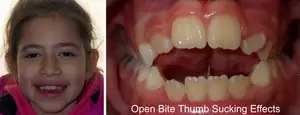
Other Causes
- Improper swallowing pattern
- Poor tongue posture
- Rheumatoid arthritis
- Temporomandibular joint disorder (TMD) , or other chronic dental/jaw pain
- Traumas to the jaw
- Lack of space for adult teeth to erupt
- Other dental-related issues
Whatever the cause, an open bite can be corrected with careful supervision from an orthodontist. Expert orthodontists are skilled at treating this kind of dental issue, using clinically-proven methods including braces and Invisalign.
Signs of an Open Bite?

The most noticeable sign of an open bite is an inability to entirely close your mouth so that your front or back teeth don’t touch on the top and bottom.
Other signs you might have an open bite or another malocclusion:
- Inability to make contact with upper and lower teeth
- Problems with chewing or swallowing
- Less-pronounced chin
- Speech problems, such as a lisp
- Improper teeth alignment
- Pain when biting or chewing
- Difficulties biting food with the front teeth
- Unattractive smile
Open Bite
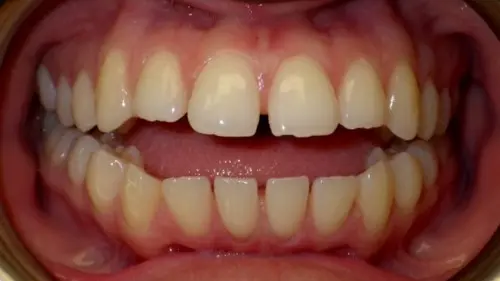
Visiting a licensed orthodontist is crucial if you have concerns about your bite. An orthodontist will check your teeth and bite in a detailed manner.
They use x-rays and 3D-imaging to see your teeth’s structure. This helps in examining issues below the gum line, like an open bite. They will determine the underlying reasons for your open bite through this procedure.
After diagnosing, the orthodontist will discuss different treatment options with you. These options might include a treatment plan to move your teeth. They will consider both your upper and lower jaws.
Sometimes, fixing an open bite can involve upper jaw surgery, especially if there’s a skeletal problem. Another option could be to correct an open bite with Invisalign. Together, you’ll choose the best method to treat your specific malocclusion.
Bad For Your Teeth?
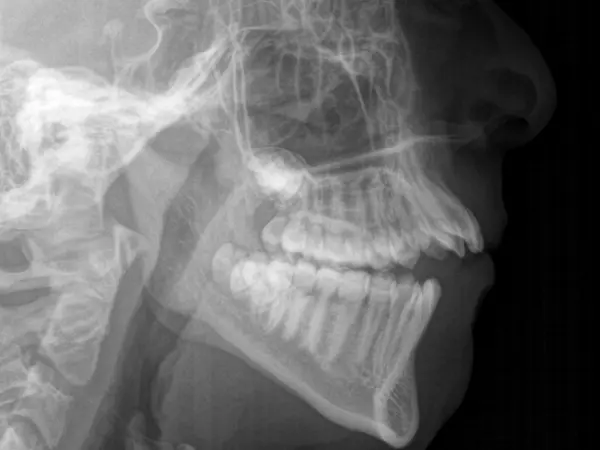
Yes. An open bite can cause complications for your teeth, mouth, and overall bodily health, not to mention an unattractive smile.
A malocclusion like an open bite gets worse over time , which increases the chances of problems like gum disease, or excessive wear and tear of the load-bearing teeth.
Other problems associated with an open
- Speech impediments, such as a lisp
- Lack of confidence/embarrassment with your smile
- Problems or pain with chewing or biting
- Temporomandibular joint dysfunction (TMD)
- Headaches and earaches
- Sleep difficulties
- Snoring
- Gum and periodontal disease
- Tooth decay from excessive bacteria growth
- Digestive issues from trouble chewing
because of these associated problems, it’s important to address an open bite as soon as possible . Children with an open bite should get an orthodontic evaluation at age 7 when the front adult teeth have fully erupted. The American Association of Orthodontists recommends all children see an orthodontist for a consultation at age 7.
Adults, too, can achieve excellent results with braces or Invisalign treatment from an expert, licensed orthodontist. It’s never too late to correct dental issues and straighten your teeth.
An Open Bite
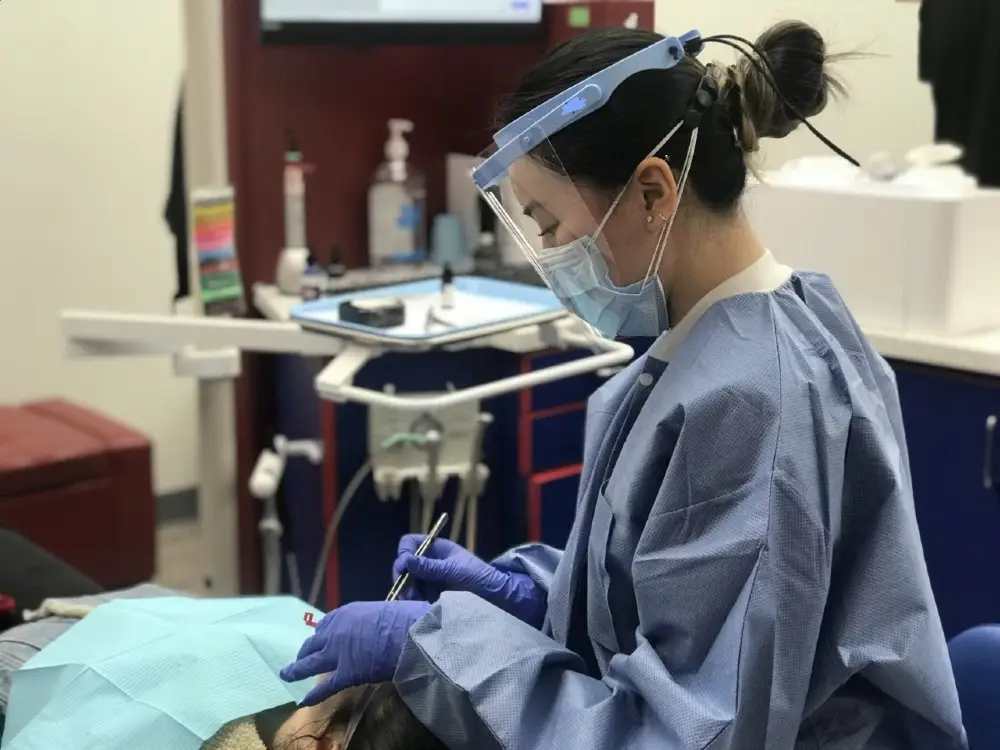
Once you visit the orthodontist for a comprehensive exam and diagnosis, you can discuss treatment options. Expert orthodontists can treat open bites with a variety of treatments; they will offer a professional recommendation based on your specific diagnosis and needs.
Be sure to seek an expert opinion from a licensed orthodontist in a specialized orthodontic practice, who can provide cutting-edge technology and is up-to-date with all treatment modalities.

